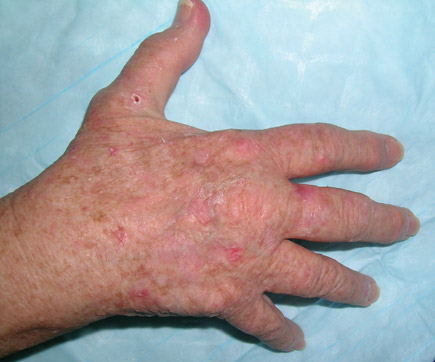1995-2004: The big merger
After years of effort and negotiation, ACP and the American Society of Internal Medicine officially merged in 1998.
The big news of the College's ninth decade was that finally, after years of effort and negotiation, ACP and the American Society of Internal Medicine (ASIM) officially merged in 1998.
It required many meetings and “a Henry Kissinger style of diplomacy,” according to William J. Hall, MD, MACP, but leaders of the organizations agreed on a plan to come together, leading to celebration and even standing ovations.
The transition required “an enormous amount of effort,” with changes ranging from headquarters staffing to state leadership, but in the end the merger story was “one of vision, dedication, determination, and hard work,” according to Walter J. McDonald, MD, MACP, and Alan R. Nelson, MD, MACP, writing in “Serving Our Patients and Profession: A Centennial History of the American College of Physicians (1915–2015).”
The combined entity was known as ACP-ASIM for 3 years before reverting back to the American College of Physicians in 2002. The College was trying to make a name for itself in the public domain at the time. In 1996, it launched a multiyear, multi–million-dollar campaign to help people understand what exactly an internist is and when they should see one. The campaign involved print and radio ads and posters for physician offices, all using the tagline “Doctors for Adults.”
The first ads encouraged baby boomers to start taking better care of themselves and seek out internists for age-appropriate preventive care. A second series focused on osteoporosis, menopause, stroke, hypertension, and women's cancers. According to consumer research, Americans did learn about internists and internal medicine from the campaign—awareness went from 14% in 1996 to 23% in 2001.
Political events of the time were also drawing attention to health care. ACP leaders worked with President Bill Clinton on his effort to enact universal coverage and to pass a patient bill of rights. Both failed, but the College continued to publish on the subject, releasing papers on the health impacts of being uninsured and offering a plan to achieve universal affordable coverage in 7 years (many concepts of which were eventually incorporated into the Affordable Care Act).
The College tackled other controversial issues, calling for greater gun control in papers published in 1995 and 1998. Physician workforce problems were addressed in a 1996 paper about fairness and equity for foreign medical graduates and a 1998 paper on financing of graduate medical education.
Other shortcomings in the health care system came to the public's attention, thanks to the Institute of Medicine's “Crossing the Quality Chasm” report in 2001. In response, the College focused on making U.S. health care more efficient, effective, and high quality, releasing a policy paper in 2004 titled “Patient-Centered, Physician-Guided Care for the Chronically Ill.” Evidence-based medicine was becoming an increasingly important concept.
To assist physicians in providing high-quality, evidence-based care, the College developed new resources. Work began on ACP's Physicians' Information and Education Resource (PIER) in 1996, and the tool went public in 2002. Annals of Internal Medicine added “On Being a Patient” articles and Summaries for Patients during the decade, and its website launched in 2000. Starting in 2001, the College's annual meeting featured Clinical Pearls sessions and the Clinical Skills Center.
The College also began offering more practice support tools to help internists with new developments in health care, including the Health Insurance Portability and Accountability Act (enacted in 2002), implementation of the first electronic health records, and fears about Y2K.
While Y2K panic fizzled, another wave of change beginning around the same time has continued to grow—hospital medicine. In 1996, Robert Wachter, MD, FACP, and Lee Goldman, MD, FACP, coined the term “hospitalist” in a New England Journal of Medicine editorial, and in 1997, the first hospital medicine meeting was held at the University of California, San Francisco.
The meeting attendees decided to form a society, which became the National Association of Inpatient Physicians, the first affiliate member of ACP, in 1998. Its first meetings were held in conjunction with the College's annual meeting, and financial and administrative support was provided by ACP. The hospitalists eventually went independent and renamed their organization the Society of Hospital Medicine in 2002. Hospital medicine continued to be a focus of attention within the College, though, with growing offerings for hospitalists at the annual meeting.
In addition to expanding out of ambulatory practice, ACP moved beyond the Americas. The first truly overseas chapter was formed in Japan in 2002.




